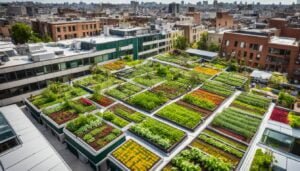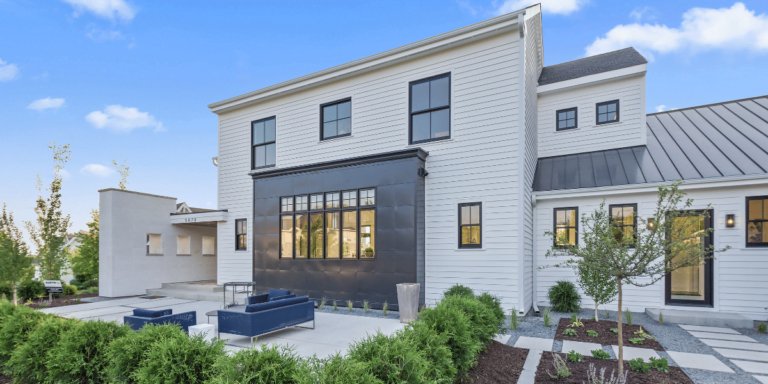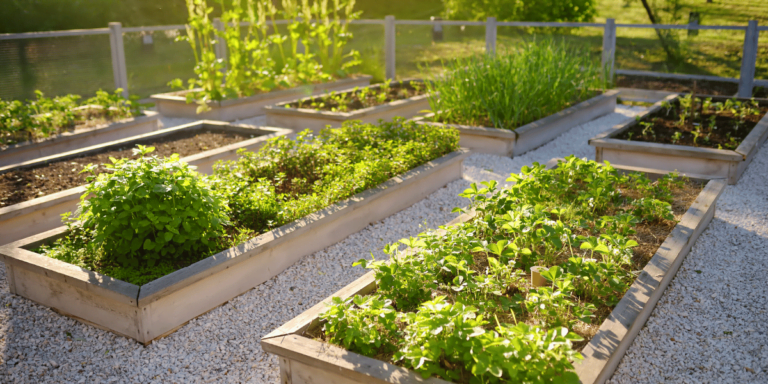Harvesting the Potential: Boosting Biodiversity and Food Security through Rooftop Farming
Urban Rooftop Ecosystems is gaining popularity as a sustainable solution in cities worldwide. With urban spaces becoming increasingly limited, utilizing rooftops for agriculture offers a unique opportunity to address challenges such as land scarcity, biodiversity loss, and food security. By transforming urban rooftops into green havens, cities can cultivate urban rooftop ecosystems that not only provide fresh produce but also contribute to the well-being of the environment and urban communities.
One of the key benefits of urban rooftop ecosystems farming is its ability to conserve space. In densely populated areas, where ground-level land is limited, urban farming offers a viable alternative for cultivating crops. By utilizing unused rooftop spaces, cities can tap into their agricultural potential and supplement local food supplies.
Additionally, urban rooftop ecosystems farming plays a crucial role in boosting biodiversity in urban environments. As cities expand, natural habitats are often lost, resulting in a decline in species diversity and ecosystem health. By creating green roofs, urban farming not only provides habitats for various plants and insects but also attracts birds and other wildlife, enhancing urban biodiversity and reconnecting people with nature.
Furthermore, rooftop farming contributes to food security in urban areas. By producing food closer to the point of consumption, cities can reduce their dependence on distant agricultural regions and minimize the carbon footprint associated with transportation. This enables communities to have access to fresh, nutritious, and locally grown produce, promoting healthier eating habits and reducing the risks of food insecurity.
Urban Rooftop ecosystems farming also offers environmental benefits. Green roofs help mitigate the urban heat island effect by reducing the temperature of buildings and surrounding areas. They act as natural insulation, resulting in energy savings for buildings. In addition, rooftop farms support stormwater management by absorbing and retaining rainwater, thus reducing the strain on urban drainage systems.
The Benefits of Rooftop Farming:
| Benefits | Description |
|---|---|
| Space conservation | Rooftop farming efficiently utilizes underutilized spaces in urban areas, addressing land scarcity challenges. |
| Biodiversity enhancement | Green roofs provide habitats for a variety of plants, insects, birds, and wildlife, promoting urban biodiversity. |
| Food security | Rooftop farming reduces reliance on distant food sources, ensuring access to fresh and locally grown produce. |
| Environmental sustainability | Rooftop farms contribute to reducing the carbon footprint, managing stormwater runoff, and mitigating the urban heat island effect. |
As cities continue to grow and evolve, rooftop farming presents a promising solution to address key urban challenges. By harnessing the potential of urban rooftop ecosystems, cities can foster sustainable urban gardening practices, combat biodiversity loss, enhance food security, and create greener, more resilient environments. With the increasing recognition of the importance of rooftop farming, it is an essential tool in building a more sustainable and self-sufficient future for urban communities.
Creating a Sustainable Cityscape: The Rise of Urban Agriculture on Rooftops Ecosystems and Terraces
Urban agriculture plays a vital role in fostering a sustainable future for cities. By utilizing rooftops and terraces for farming, urban areas can address multiple challenges and promote environmental resilience. With a focus on food security, reducing environmental impact, and fostering community engagement, urban agriculture has emerged as a sustainable solution for densely populated areas.
One of the key benefits of urban agriculture is its contribution to self-sufficiency and food security. By cultivating crops and raising livestock within the city limits, urban farming reduces dependency on external food sources. This localized approach ensures a more reliable food supply chain, especially in times of crises or disruptions.
Furthermore, urban agriculture significantly reduces carbon emissions and minimizes the environmental impact associated with traditional agricultural practices. By producing food closer to the point of consumption, known as “reducing food miles,” urban agriculture reduces transportation-related emissions and the reliance on fossil fuels. Additionally, the use of organic farming methods and the integration of green spaces contribute to improved air quality and a healthier urban environment.
Community engagement is another crucial aspect of urban agriculture. Rooftop and terrace farms not only provide fresh produce but also serve as educational platforms that promote sustainable practices and encourage local participation. These initiatives strengthen the bond between residents and their food sources, fostering a sense of community and shared responsibility for a sustainable future.
Through urban agriculture, cities can create a harmonious balance between urban infrastructure and the natural environment. Green spaces on rooftops and terraces not only provide food but also act as carbon sinks, absorbing greenhouse gases and mitigating the urban heat island effect.
The Environmental Impact of Urban Agriculture
Urban agriculture has the potential to make a significant impact on the environment. Let’s take a closer look at some of the key environmental benefits:
| Environmental Benefit | Description |
|---|---|
| Reduced carbon emissions | The proximity of urban farms to consumers reduces the need for long-distance transportation, resulting in lower carbon emissions. |
| Improved air quality | Urban agriculture contributes to cleaner air by absorbing carbon dioxide and releasing oxygen, as well as filtering pollutants. |
| Sustainable water use | Efficient water management techniques, such as rainwater harvesting and drip irrigation, minimize water waste and promote sustainable water use. |
| Enhanced biodiversity | Roof gardens and terrace farms create habitats for diverse plant and animal species, supporting urban biodiversity and ecosystem health. |
As we continue to explore the potential of urban agriculture, its impact on sustainable cityscapes becomes increasingly evident. By incorporating rooftop and terrace farming into urban planning, cities can build resilient communities, ensure food security, and create healthier, more environmentally friendly urban environments.
Nature’s Hidden Gem: Urban Rooftop Ecosystems Discover the Tranquil Havens Hiding Above You

Green rooftops are much more than just rooftops covered in plants. They are hidden gems that offer a myriad of benefits for urban environments. These green spaces not only add beauty to the concrete jungle but also contribute to the overall well-being of cities and their inhabitants.
Promoting Biodiversity and Urban Wildlife
One of the key advantages of green rooftops is their ability to promote urban biodiversity. By providing habitats for plants, birds, insects, and other wildlife, these rooftop oases bring nature back to the city. This enhances the ecological functionality of urban areas and supports the survival of various species in a habitat that would otherwise be unavailable.
Improved Air Quality
Green rooftops act as natural air purifiers. The plants on these rooftops filter pollutants from the air, helping to improve the overall air quality in densely populated areas. They absorb carbon dioxide and release oxygen, reducing the carbon footprint of cities and creating a healthier atmosphere for residents.
Noise Reduction and Temperature Regulation
Another benefit of green rooftops is their ability to reduce noise pollution. The vegetation and soil on these rooftops absorb and deflect sound, acting as a natural sound barrier that shields buildings from noise coming from the surrounding environment. By reducing noise levels, green rooftops contribute to a more peaceful and calm urban atmosphere.
In addition, green rooftops play a crucial role in temperature regulation. They help to mitigate the urban heat island effect, which occurs when cities trap heat and become significantly warmer than their surrounding rural areas. The plants on green rooftops absorb heat, provide shade, and release moisture through evapotranspiration, effectively cooling the surrounding air and reducing the overall ambient temperature.
By transforming urban rooftops into green havens, cities can harness the power of nature to create healthier and more sustainable environments. These green spaces not only benefit human well-being but also enhance the overall ecological balance of urban areas.
Revolutionary Roofscapes: Transforming Concrete Jungles into Urban Oases

Green roofs offer a multitude of environmental benefits that can significantly contribute to creating sustainable and livable cities. Incorporating green roofs into urban design not only beautifies the concrete jungle but also provides a range of advantages that improve the overall quality of urban life.
Improved Air Quality
- Green roofs act as natural air filters, absorbing pollutants and harmful gases, such as carbon dioxide and sulfur dioxide.
- The vegetation on green roofs releases oxygen, contributing to cleaner and healthier air for urban dwellers.
Stormwater Management
- Green roofs can absorb and retain rainwater, easing the burden on stormwater management systems and reducing the risk of flooding.
- The vegetation on green roofs helps slow down the flow of water, allowing it to be absorbed by the soil and released gradually, preventing runoff.
| Environmental Benefits of Green Roofs |
|---|
| Improved air quality |
| Stormwater management |
| Reduced heat island effect |
| Biodiversity restoration |
Reduced Urban Heat Island Effect
- Green roofs can significantly reduce the urban heat island effect by absorbing and dissipating heat, helping to regulate temperatures in cities.
- The vegetation on green roofs provides shade, reducing the energy required for air conditioning and lowering overall energy consumption.
Biodiversity Restoration
- Green roofs provide habitats for various plant species, insects, birds, and other wildlife, promoting biodiversity in urban environments.
- These green spaces create opportunities for biodiversity conservation and restoration, bringing nature back to the city and supporting ecosystem resilience.
The incorporation of green roofs into urban design is a transformative approach that can turn concrete jungles into urban oases. These serene and sustainable spaces offer urban dwellers a chance to relax, recreate, and connect with nature, improving their overall well-being. Additionally, the environmental benefits of green roofs contribute to a healthier and more resilient urban ecosystem. By embracing the concept of green roofs, cities can take a revolutionary step towards creating more sustainable and livable environments for present and future generations.
Integration of Rooftop Intensive Agriculture in Urban Ecosystems
The rise of constructed ecosystems, such as rooftop farms, presents an exciting opportunity to advance urban ecology and tackle sustainability challenges in our cities. With limited land availability, rooftop farming emerges as a practical solution to utilize underutilized spaces and contribute to food security and sustainable food supply chains. By transforming barren rooftops into flourishing gardens, cities can create a vibrant network of urban agriculture.
Urban Rooftop ecosystems farming not only addresses food security but also fosters ecosystem modification. These constructed ecosystems serve as platforms for collaborative interdisciplinary research, experimentation, and innovation. Researchers and policymakers can leverage rooftop farms to study and implement sustainable urban farming techniques, informing urban planning and policy decisions. This integration of rooftop intensive agriculture promotes urban sustainability, resilient food systems, and a greener future.
Constructed ecosystems offer multiple advantages beyond food production. By creating rooftop farms, cities can enhance biodiversity, improve air quality, and mitigate the urban heat island effect. The presence of green spaces in urban areas provides habitats for various plants and animals, contributing to the restoration of urban biodiversity. Moreover, rooftop farming actively engages communities, fostering a sense of connection with nature and inspiring individuals to adopt sustainable practices.
As we look towards a future that balances urbanization with environmental stewardship, constructed ecosystems like rooftop farms will play a crucial role. By embracing rooftop intensive agriculture, cities can unlock the potential of underutilized spaces, enhance food security, and demonstrate their commitment to building sustainable and resilient urban ecosystems.
FAQ
What is urban rooftop ecosystems farming and why is it gaining popularity in urban areas?
Urban Rooftop ecosystems farming is the practice of cultivating crops and plants on rooftops, offering a sustainable solution for cities facing land scarcity and loss of natural habitats. It conserves space, improves biodiversity, enhances food security, and reduces the carbon footprint, making it an attractive option for urban environments.
How does urban agriculture contribute to sustainability?
Urban agriculture plays a crucial role in promoting self-sufficiency, reducing carbon emissions, improving air quality, and fostering community engagement. By bridging the gap between rural crop production and urban consumption, it ensures food security in densely populated areas while minimizing food miles, air pollution, and providing green spaces to enhance the quality of urban life.
What are the benefits of green rooftops?
Green rooftops offer numerous advantages, such as promoting biodiversity, improving air quality, reducing noise pollution, and regulating temperatures in urban areas. These green spaces create habitats for plants, birds, insects, and other wildlife, restoring nature to the concrete jungle and creating healthier environments for both people and wildlife.
How do green roofs contribute to environmental and economic sustainability?
Green roofs have multiple benefits, including improving air quality, managing stormwater runoff, reducing the urban heat island effect, and restoring biodiversity. By incorporating green roofs into urban design, cities can create serene and sustainable oases amidst the concrete jungles. These green spaces provide opportunities for relaxation, recreation, and interaction with nature, enhancing the well-being of urban dwellers.
How does rooftop farming contribute to urban sustainability and resilient food systems?
Rooftop farming utilizes underutilized space in urban areas, contributing to food security and sustainable food supply chains. These constructed ecosystems also offer platforms for collaborative interdisciplinary research and experimentation, informing urban planning and policy decisions. By integrating rooftop intensive agriculture, cities can promote urban sustainability and resilient food systems.










